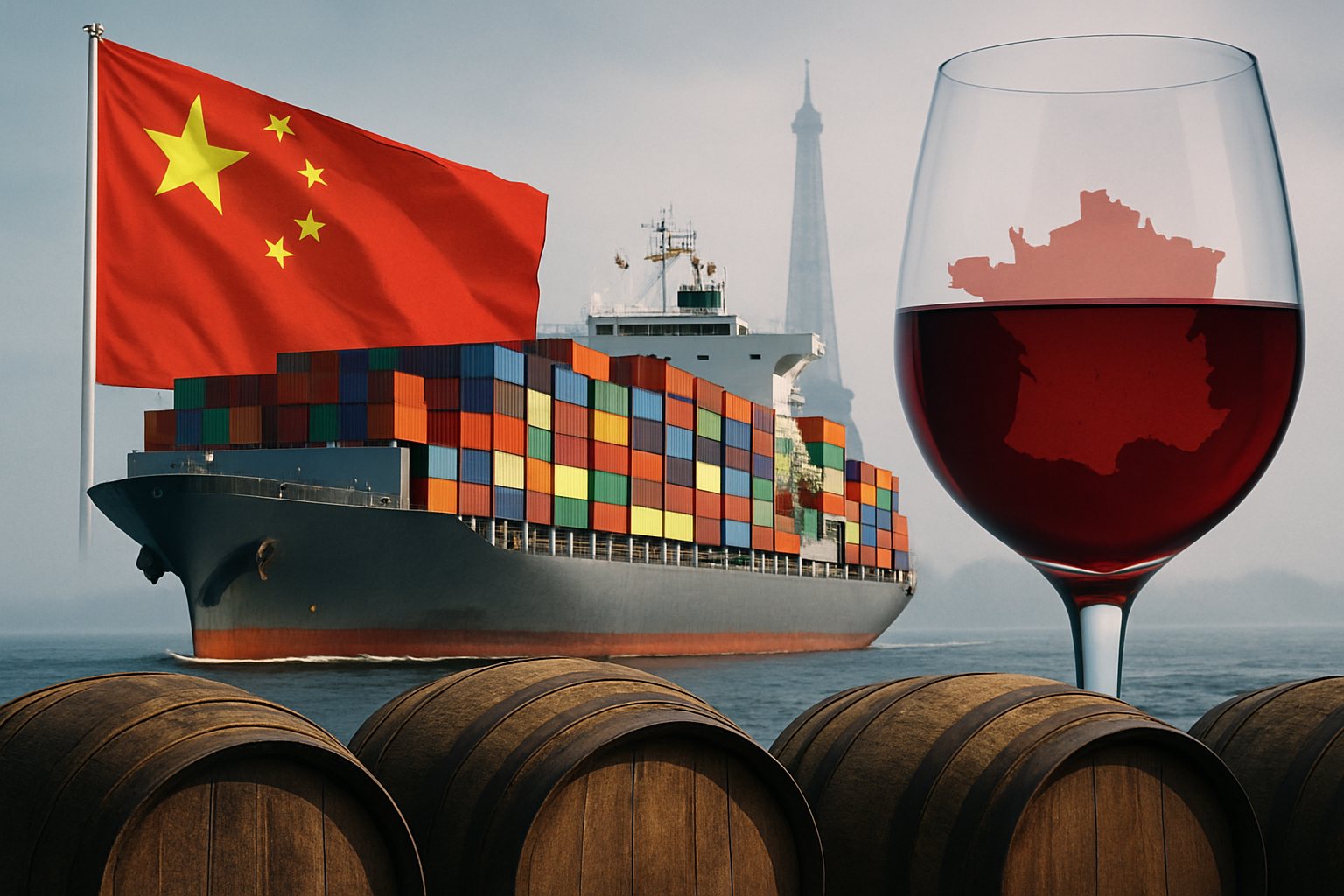
“Trade is a communication of cultures and values, and wine tells that story beautifully.”
China’s Resurgence in Wine Imports: What It Means for French and Australian Producers
After several years of declining demand, China is once again stepping into the spotlight as a major force in the global wine trade. Driven by post-pandemic recovery, evolving domestic consumption patterns, and the easing of geopolitical tensions, Chinese wine imports are showing signs of robust growth in 2025.
For producers in France and Australia two countries with long and complex trade histories with China this resurgence presents both opportunities and caution. The stakes are high. China’s changing palate, expanding middle class, and policy recalibrations are reshaping the dynamics of global wine exports, and the industry is watching closely.
Why China Still Matters in the Global Wine Market
China may not be the top wine consumer per capita, but its scale and influence are undeniable. The country’s appetite for imported wine is once again growing, especially among affluent urban millennials and Gen Z consumers who associate foreign wine with status, wellbeing, and global culture.
Recent trade data indicates:
-
A 15% year-on-year increase in wine imports in Q1 2025
-
Rising demand for premium and ultra-premium wines
-
An expanding e-commerce infrastructure for direct-to-consumer wine sales
-
Renewed partnerships with international distributors
These trends are particularly favourable to established exporters like France, and newly re-engaged players like Australia.
“The future of wine is global. Great wine can come from anywhere, and be appreciated everywhere.”
A Second Wind for France: Premium Positioning Reaffirmed
France has long been considered the gold standard of wine in China. Bordeaux, Burgundy, and Champagne still hold prestige, particularly in luxury gifting and fine dining sectors.
The current resurgence is allowing French producers to:
-
Reinforce their premium image through targeted digital marketing
-
Broaden regional representation, introducing lesser-known appellations
-
Leverage cultural cachet through tourism and wine education programmes
Additionally, French exporters are adapting quickly to Chinese digital platforms such as WeChat and Tmall, giving them a competitive advantage in connecting with younger, mobile-first consumers.
Australia’s Re-entry: From Trade War to Trade Reset
For Australia, the story is more complex but potentially more lucrative. Following a protracted trade dispute that led to tariffs as high as 218%, 2024 brought a long-awaited thaw in diplomatic relations and the removal of punitive tariffs on Australian wine in early 2025.
Now, Australian producers are:
-
Rebuilding distribution networks with Chinese partners
-
Promoting value and innovation, particularly in Shiraz and organic wines
-
Re-entering Tier 1 cities with bold retail and digital campaigns
Australian wine’s approachable style and competitive pricing could make it a formidable force again particularly in the mid-market segment, where Chinese consumers are increasingly open to exploring beyond Bordeaux and Burgundy.
Strategic Risks and Considerations
Despite the positive momentum, risks remain:
-
Policy uncertainty still lingers over Australia’s export strategy
-
Volatility in consumer preferences complicates long-term planning
-
Domestic Chinese winemakers are growing in both quality and market share
-
Continued global logistical challenges may affect margins and delivery timelines
For both French and Australian producers, success in China today demands cultural intelligence, digital fluency, and pricing agility.
Why China’s Recovery Signals a New Global Phase
At Vinho, we view China’s resurgence not simply as a rebound but as a signal that the global wine map is shifting once again. Markets once seen as unpredictable are stabilising, and consumer demand is maturing. For exporters and investors alike, now is the time to re-evaluate strategy, reinvest in relationships, and align with China’s evolving wine identity.
The regions and brands that embrace innovation, storytelling, and cultural relevance will be the ones to thrive in this next chapter.
Conclusion
China’s renewed appetite for imported wine is a welcome development but it’s not a return to the status quo. Today’s Chinese consumers are more informed, more digitally engaged, and more diverse in their preferences. For French and Australian producers, this is both a challenge and an opportunity.
At Vinho, we’ll continue to monitor these market shifts and provide you with the insights needed to navigate global trade trends with clarity and confidence. Whether you’re investing in exports, partnerships, or fine wine portfolios, China’s evolving role is one to watch closely.
Stay tuned for further updates and, as always, feel free to contact our team for bespoke guidance tailored to your objectives in the international wine economy.
Vinho
Your Partner in Fine Wine


